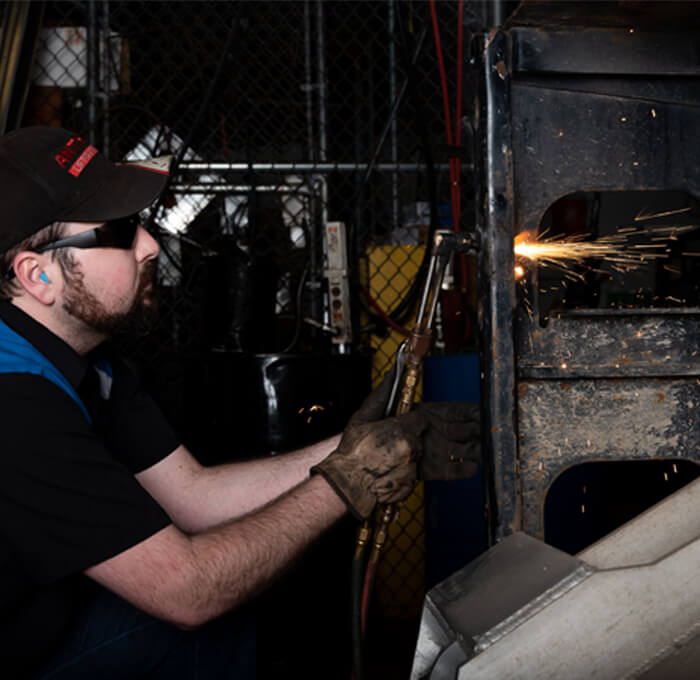Medium and heavy-duty diesel-powered trucks have incorporated complicated exhaust or emission aftertreatment systems in response to an increasing need for clean diesel emissions.
These systems handle post-combustion gases as they exit the engine, lowering emissions while maintaining power and performance.
Even though aftertreatment systems have been in operation for years, many fleets still have trouble maintaining and repairing them.
It is beneficial for fleets to understand how aftertreatment systems function in order to better understand how to maintain them in order to improve uptime and reduce costly repairs.
Core elements
The diesel particulate filter system (DPF), which filters particulate matter, and the selective catalytic reduction system (SCR), which reduces nitrogen oxide (NOx), are the two main components of a vehicle’s aftertreatment system.
The DPF system is made up of the following components:
- The Diesel Oxidation Catalyst (DOC) decreases particulates while oxidizing carbon monoxide and hydrocarbons.
- According to Raymond Parrish, Cummins Service Engineer, this filter is designed to remove more than 90% of particles from the exhaust.
The components of the SCR system are as follows:
- DEF (Diesel Exhaust Fluid) is a urea and deionized water combination. To minimize NOx emissions, DEF is added to the exhaust stream.
- DEF pump – A component of the DEF delivery system that draws DEF from the tank, filters it, and primes and maintains pressure between the pump and the doser.
- The DEF doser is a device that injects DEF into the exhaust system.
- Before the SCR, the exhaust stream is mixed with DEF in the decomposition chamber.
- SCR – This is the catalyst for the chemical process that converts the exhaust stream and decomposed DEF to comply with NOx emission limits.
There are sensors in addition to the core components of the aftertreatment system. A relative pressure sensor calculates the amount of particles caught in the DPF.
The temperatures of the system are monitored via exhaust gas temperature sensors. The NOx conversion is measured using NOx sensors. PM (particulate matter) sensors, often known as soot sensors, are used to monitor particles in exhaust, mainly ash and soot.
These sensors all signal when the aftertreatment system needs to be repaired or maintained.
Aftertreatment system management
A DPF filter can become blocked over time.
The DPF should be maintained on a regular basis to ensure that it continues to function properly.
Engine manufacturers specify DPF service intervals, so examine your service manual to see how often the DPFs in your fleet should be cleaned or replaced.
Ignoring maintenance can lead to decreased performance and the possibility of irreversible damage to emission control components. A clogged DPF can result in costly repairs that might be avoided with routine maintenance.
Regeneration cleaning of the DPF Filter
DPF regeneration cycles remove stored soot, oil, and ash in the DPF, ensuring that it continues to function properly.
The engine control module initiates automatic regeneration at a predetermined period, requiring no input from the operator.
The exhaust temperature rises to in excess of 932 degrees Fahrenheit or 500 degrees Celsius during active DPF regeneration. The oxidation of soot occurs at these temperatures, which cleans the filter.
Manual regeneration, sometimes known as parked regeneration, differs from automated regeneration in that it is controlled by the operator. When automated generation is not possible, manual regens are frequently conducted.
When doing a manual regeneration, park the vehicle in a safe area because radiating temperatures can reach dangerous levels and continue for up to an hour.
Wrap-Up
Since a dirty DPF filter can clog and harm other emission components, failing to clean or replace it at the prescribed intervals can result in poor engine performance, lower efficiency, damage to emission control components, and, ultimately, unplanned downtime and expensive repairs.
As a result, fleets and service employees must be aware of the fundamental advantages of maintaining aftermarket treatment systems, as well as how such systems contribute to the vehicles’ overall performance.
You may decrease these issues if you have an experienced truck mechanic maintaining the trucks. You should think about hiring a fleet truck repair company that is capable of servicing this critical system.




